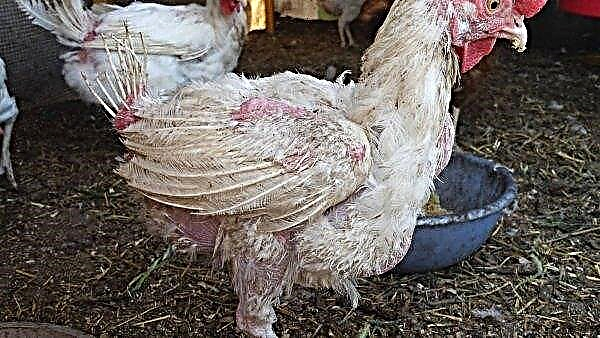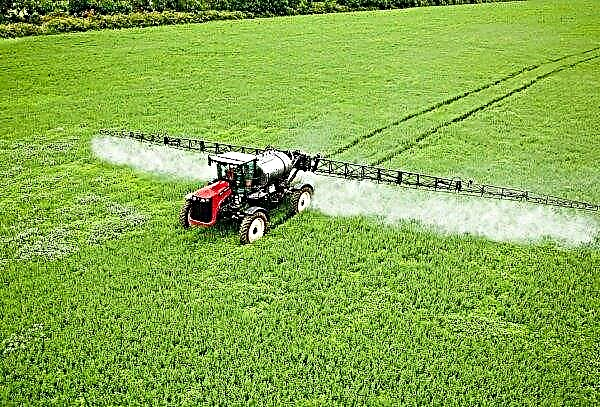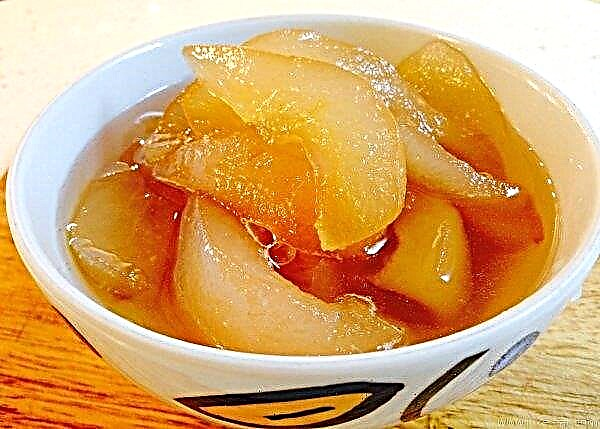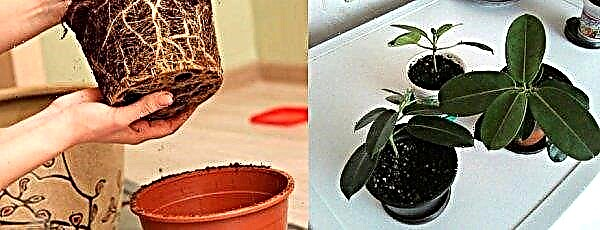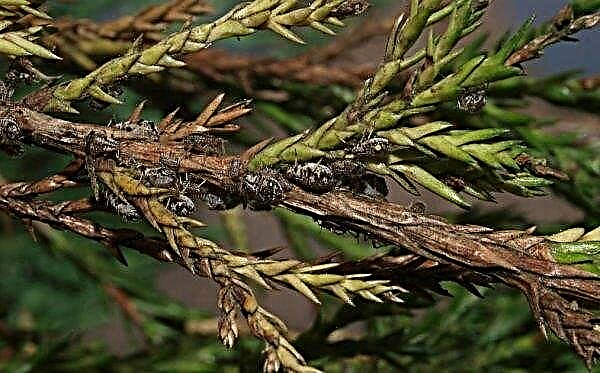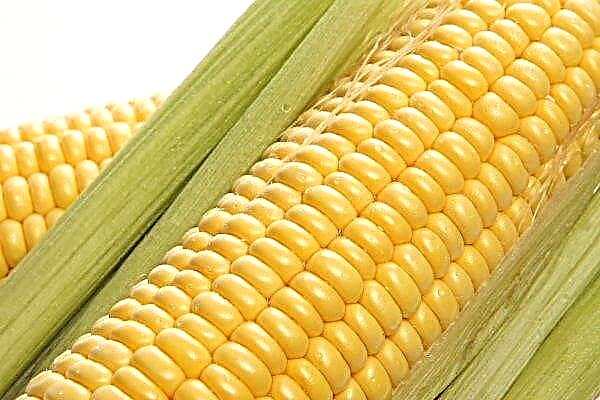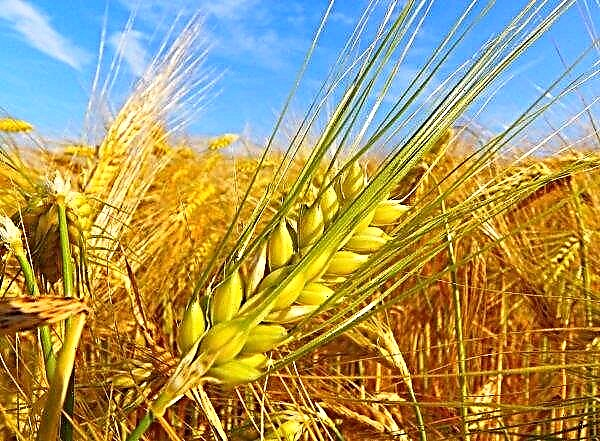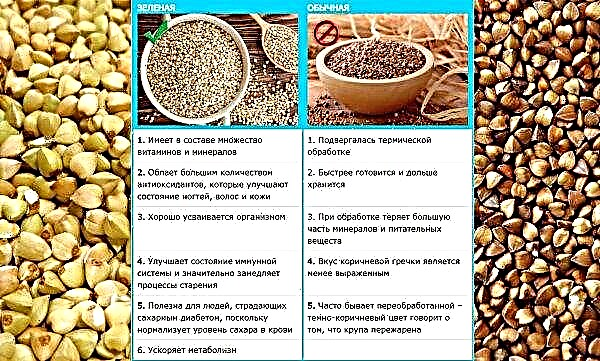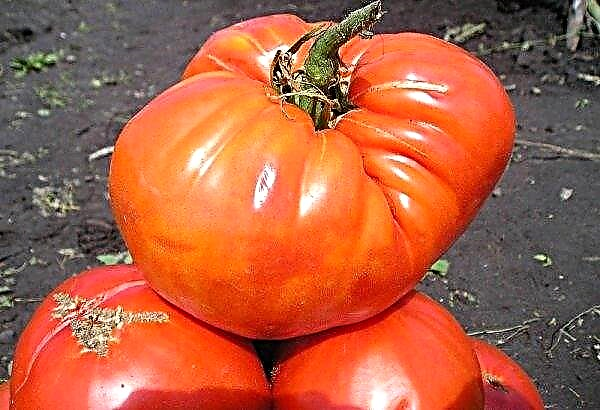Farmers often come across parasites that inhabit the digestive system of their animals. Pigs are more likely to have different types of helminths. Since the result of such an unpleasant neighborhood is the development of dangerous pathologies, treatment should be started on time. In this article, you will learn where such troubles come from and how to quickly remove parasites from pigs.
Why do pigs have worms?
The cause of infection is the penetration of parasite eggs into the body with food, as pigs like to eat food from the ground and enjoy organic remains.
The next method of infection is the feces of sick animals. This often happens on large farms where pigs are in the same pen. In addition, infection occurs on a walk if animals eat grass or drink water that is contaminated with worm eggs.
Did you know? Pigs do not like to wallow in the mud because they are sluts. Thus they escape from heat, parasites and fight against mosquitoes.
Varieties
Today, the following types of worms are discovered:
- Nematodes. Worms affecting almost every organ. More often found in young animals.

- Roundworm. Large roundworms that inhabit the intestines. Small pigs are affected up to 6 months. They grow to 35 cm in length.

- Trichinella. Small worms, their size is not more than 4 mm. They live more often in the intestines, however, moving through the blood, they can end up in any organ.

- Metastroigilides. Thin long nematodes that settle in the bronchi of pigs. More often they infect young piglets.
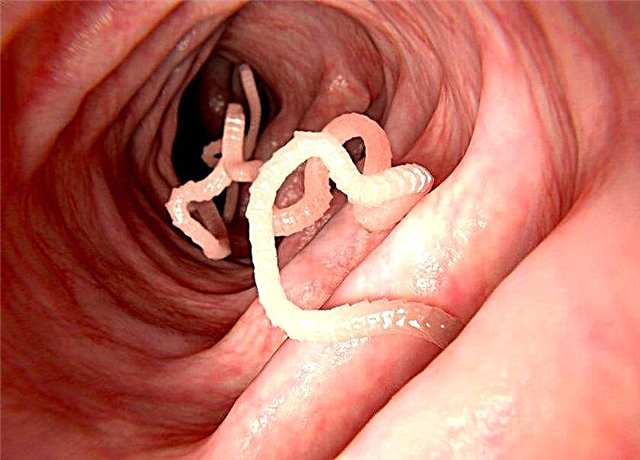
- Tapeworms. The body of the parasites consists of segments, each containing eggs. Muscles, other organs, and even the brain are more likely to be affected.

- Cysticerci. Flatworms that inhabit the entire body and even in the eyes. Symptoms are implicit, more often the problem is clarified only after slaughter.
- Scraper. Enter the body after eating raw fish. Upon detection, the animal is killed, since it is impossible to get rid of them.
Symptoms and first signs
Newbie breeders are interested in: how do you know if pigs are infected with parasites? The first thing you need to pay attention to is nutrition.

In addition, the following symptoms are observed:
- stunting and mass gain;
- the appearance of cough;
- gnashing of teeth during sleep;
- temperature rise;
- vomiting
- upset gastrointestinal tract;
- decreased physical activity;
- restless state;
- worms are visible in the manure.
Treatment
Before proceeding with the treatment of worms, it is recommended to consult a veterinarian. To get the result, the whole process is carried out under his supervision. Since the dosage must be calculated precisely so as not to harm the animal even more. In the event of an excess of the treating substance, the body will be seriously damaged, and in case of a deficiency, the result will not be achieved. Consider how to treat animals that have been exposed to parasites.
Important! Timely treatment will have a minimal impact on pig production, such as weight gain and product quality.
Worm preparations
Veterinarians prescribe such drugs to get rid of worms:
- Nilverm. Used to treat pigs from birth. The drug is administered to piglets as an injection. Dosage of 1 ml per 10 kg of animal weight. Upon reaching the age of 3-6 months. dosage changes to 15 ml per 1 kg of weight. Older individuals are given 10 ml per 1 kg of body weight.
- Hygrovetin. Give from 2 months of age, adding 1.5 kg of the drug to 1 ton of feed. Piglets are given such food for a month, for adults - twice as long.
- "Alben". Tablets for oral use. A single dose is 1 tablet per 35 kg of weight.
- Sodium silicofluoride. A popular drug for helminths. The powder is added to the feed during its preparation. If the animal weighs less than 60 kg, its single dose is 2.5 kg per 1 ton of feed, and if more, 1.5 kg per 1 ton of food. Such feeding continues for 3 days.
- Ivermek. Injections that are injected intramuscularly into the neck or inner thigh area, while taking into account the weight of the animal. A single dosage of 300 mcg per 1 kg of weight. If the condition is not running, 1 injection is enough, otherwise they do the second 10 days after the first.

Folk remedies
In addition to medicines, livestock breeders add folk, such as:
- Garlic. Before serving, grind and mix with dry food. Dosage: 1 g of garlic per 1 kg of feed.
- Tansy. For treatment, pre-dried flowers are taken. Dosage: 10 g of chopped flowers per 30 kg of pig weight.
Important! Manure that is removed from the pigsty, where infected animals are located, is forbidden to use as fertilizer – there is a risk of re-infection.
The treatment of pigs from worms
So that parasites do not harm the economy, it is important not only to know what to give the animals, but also to regularly take other preventive measures.
These include:
- systematic deworming of the stock twice a year;
- processing the premises in which pigs are kept with special disinfectants;
- cleaning equipment used for caring for animals;
- clean feeders every time before falling asleep a new feed from previous residues;
- weekly treatment of the pigsty with neutralizing alkali.
Is it possible to slaughter and eat meat?
Having revealed worms, animals are forbidden to be slaughtered during drug treatment. The period of elimination of funds and parasites from the body takes about a month. If slaughter is forced, the meat is used only for processing for meat and bone meal. The meat of infected animals is forbidden to eat without heat treatment. In addition, worm eggs do not die when frozen or salted. The product is well boiled or fried. If parasites were found in the muscles, the use of meat should be abandoned.
The meat of infected animals is forbidden to eat without heat treatment. In addition, worm eggs do not die when frozen or salted. The product is well boiled or fried. If parasites were found in the muscles, the use of meat should be abandoned.
As can be seen from all of the above, poisoning worms is difficult and troublesome. Therefore, when deciding to support pigs, make sure that such a problem does not affect your household. We hope our article will help in this.Did you know? Pigs do not sweat. The only place you can watch sweat drops – piglet.






